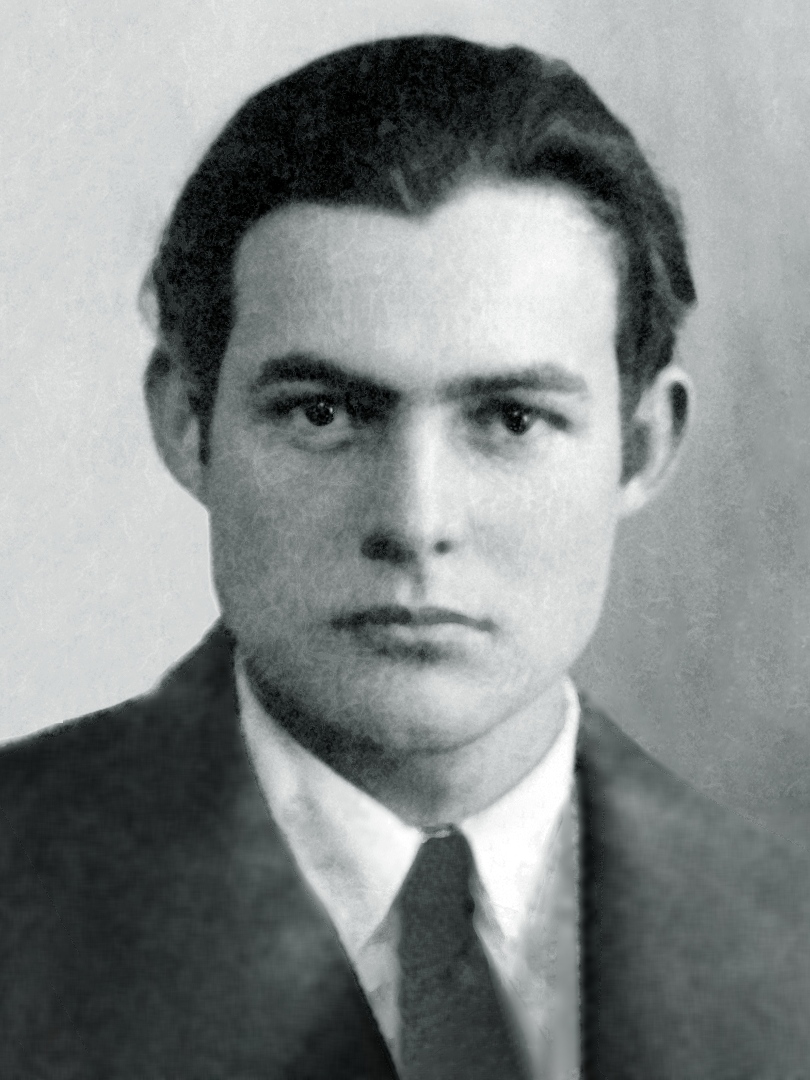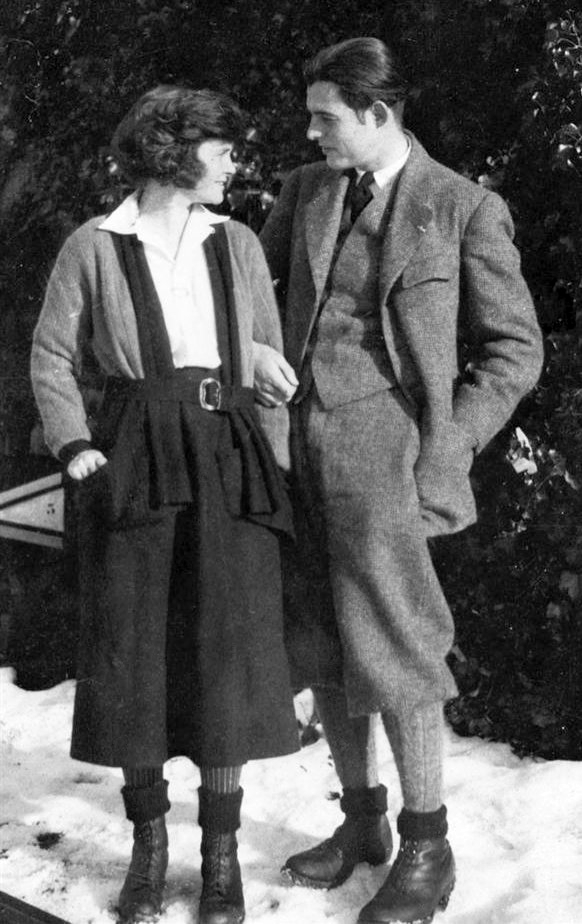|
On Writing (Hemingway)
On Writing is a story fragment written by Ernest Hemingway which he omitted from the end of his short story, "Big Two-Hearted River", when it was published in 1925 in ''In Our Time''. It was then published after Hemingway's death in the 1972 collection ''The Nick Adams Stories''. Plot summary “On Writing” is a deleted ending to "Big Two-Hearted River," an account of Nick Adams' fishing trip in northern Michigan after World War I. When "On Writing" begins, Nick has caught one trout already and observes the river, considering where more fish might lie. Nick credits his knowledge to his friend Bill Smith. This reminds him of another friend, Bill Bird, and their adventures in Europe. His thoughts continue to his old group of friends, his wife Helen, and marriage both to a woman and to fishing, before moving on to memories of bullfighting. Nick then reflects on writing and how it can take reality as inspiration and motivation, but that the stories themselves must be invented. T ... [...More Info...] [...Related Items...] OR: [Wikipedia] [Google] [Baidu] |
Ernest Hemingway
Ernest Miller Hemingway (July 21, 1899 – July 2, 1961) was an American novelist, short-story writer, and journalist. His economical and understated style—which he termed the iceberg theory—had a strong influence on 20th-century fiction, while his adventurous lifestyle and public image brought him admiration from later generations. Hemingway produced most of his work between the mid-1920s and the mid-1950s, and he was awarded the 1954 Nobel Prize in Literature. He published seven novels, six short-story collections, and two nonfiction works. Three of his novels, four short-story collections, and three nonfiction works were published posthumously. Many of his works are considered classics of American literature. Hemingway was raised in Oak Park, Illinois. After high school, he was a reporter for a few months for ''The Kansas City Star'' before leaving for the Italian Front (World War I), Italian Front to enlist as an ambulance driver in World War I. In 1918, he was se ... [...More Info...] [...Related Items...] OR: [Wikipedia] [Google] [Baidu] |
Big Two-Hearted River
"Big Two-Hearted River" is a two-part short story written by American author Ernest Hemingway, published in the 1925 Boni & Liveright edition of ''In Our Time'', the first American volume of Hemingway's short stories. It features a single protagonist, Hemingway's recurrent autobiographical character Nick Adams, whose speaking voice is heard just three times. The story explores the destructive qualities of war which is countered by the healing and regenerative powers of nature. When it was published, critics praised Hemingway's sparse writing style and it became an important work in his canon. The story is one of Hemingway's earliest pieces to employ his Iceberg Theory of writing; a modernist approach to prose in which the underlying meaning is hinted at, rather than explicitly stated. "Big Two-Hearted River" is almost exclusively descriptive and intentionally devoid of plot. Hemingway was influenced by the visual innovations of Cézanne's paintings and adapted the painter's id ... [...More Info...] [...Related Items...] OR: [Wikipedia] [Google] [Baidu] |
In Our Time (short Story Collection)
''In Our Time'' is the title of Ernest Hemingway's first collection of short stories, published in 1925 by Boni & Liveright, New York, and of a collection of vignettes published in 1924 in France titled ''in our time''. Its title is derived from the English ''Book of Common Prayer'', "Give peace in our time, O Lord". The collection's publication history was complex. It began with six prose vignettes published by Ezra Pound in the 1923 edition of ''The Little Review'', to which Hemingway added twelve vignettes and had published in Paris in 1924 as the in our time edition (with a lower-case title). He wrote fourteen short stories for the 1925 edition, including "Indian Camp" and "Big Two-Hearted River", two of his best-known Nick Adams stories. He composed "On the Quai at Smyrna" for the 1930 edition. The stories' themes – of alienation, loss, grief, separation – continue the work Hemingway began with the vignettes, which include descriptions of acts of war, bul ... [...More Info...] [...Related Items...] OR: [Wikipedia] [Google] [Baidu] |
The Nick Adams Stories
''The Nick Adams Stories'' is a volume of short stories written by Ernest Hemingway published in 1972, a decade after the author's death. In the volume, all the stories featuring Nick Adams, published in various collections during Hemingway's lifetime, are compiled in a single collection. ''The Nick Adams Stories'' includes 24 stories and sketches, eight of which were previously unpublished. Some of Hemingway's earliest work, such as "Indian Camp," as well as some of his best known stories, such as "Big Two-Hearted River," are represented. Contents This volume is divided into five sections: The Northern Woods * " Three Shots" * "Indian Camp" * " The Doctor and the Doctor's Wife" * "Ten Indians" * " The Indians Moved Away" On His Own * "The Light of the World" * "The Battler" * "The Killers" * " The Last Good Country" * " Crossing the Mississippi" War * " Night Before Landing" * "'Nick sat against the wall ...'" * "Now I Lay Me" * "A Way You'll Never Be" * "In Another Countr ... [...More Info...] [...Related Items...] OR: [Wikipedia] [Google] [Baidu] |
Nick Adams (character)
Nicholas Adams is a fictional character, the protagonist of two dozen short stories and vignettes written in the 1920s and 1930s by American author Ernest Hemingway. Adams is partly inspired by Hemingway's own experiences, from his summers in Northern Michigan at Ernest Hemingway Cottage, his family cottage to his service in the Red Cross ambulance corps in World War I. The first of Hemingway's stories to feature Nick Adams was published in his 1925 collection ''In Our Time (short story collection), In Our Time'', with Adams appearing as a young child in the collection's first story, "Indian Camp". All Nick Adams stories were later collected in a 1972 book, published after Hemingway's death, titled ''The Nick Adams Stories''. They are, for the most part, stories of initiation and adolescence. Taken as a whole, as in ''The Nick Adams Stories'', they chronicle a young man's coming of age in a series of linked episodes. The stories are grouped according to major time periods in Nick's ... [...More Info...] [...Related Items...] OR: [Wikipedia] [Google] [Baidu] |
World War I
World War I (28 July 1914 11 November 1918), often abbreviated as WWI, was one of the deadliest global conflicts in history. Belligerents included much of Europe, the Russian Empire, the United States, and the Ottoman Empire, with fighting occurring throughout Europe, the Middle East, Africa, the Pacific, and parts of Asia. An estimated 9 million soldiers were killed in combat, plus another 23 million wounded, while 5 million civilians died as a result of military action, hunger, and disease. Millions more died in genocides within the Ottoman Empire and in the 1918 influenza pandemic, which was exacerbated by the movement of combatants during the war. Prior to 1914, the European great powers were divided between the Triple Entente (comprising France, Russia, and Britain) and the Triple Alliance (containing Germany, Austria-Hungary, and Italy). Tensions in the Balkans came to a head on 28 June 1914, following the assassination of Archduke Franz Ferdin ... [...More Info...] [...Related Items...] OR: [Wikipedia] [Google] [Baidu] |
Ezra Pound
Ezra Weston Loomis Pound (30 October 1885 – 1 November 1972) was an expatriate American poet and critic, a major figure in the early modernist poetry movement, and a Fascism, fascist collaborator in Italy during World War II. His works include ''Ripostes'' (1912), ''Hugh Selwyn Mauberley'' (1920), and his 800-page Epic poetry, epic poem, ''The Cantos'' (c. 1917–1962). Pound's contribution to poetry began in the early 20th century with his role in developing Imagism, a movement stressing precision and economy of language. Working in London as foreign editor of several American literary magazines, he helped discover and shape the work of contemporaries such as T. S. Eliot, Ernest Hemingway, and James Joyce. He was responsible for the 1914 serialization of Joyce's ''A Portrait of the Artist as a Young Man'', the 1915 publication of Eliot's "The Love Song of J. Alfred Prufrock", and the serialization from 1918 of Joyce's ''Ulysses (novel), Ulysses''. Hemingway wrote ... [...More Info...] [...Related Items...] OR: [Wikipedia] [Google] [Baidu] |
Indian Camp
"Indian Camp" is a short story written by Ernest Hemingway. The story was first published in 1924 in Ford Madox Ford's literary magazine ''Transatlantic Review'' in Paris and republished by Boni & Liveright in Hemingway's first American volume of short stories '' In Our Time'' in 1925. Hemingway's semi-autobiographical character Nick Adams—a child in this story—makes his first appearance in "Indian Camp", told from his point of view. In the story Nick Adams' father, a country doctor, has been summoned to a Native American or "Indian" camp to deliver a baby. At the camp, the father is forced to perform an emergency caesarean section using a jack-knife, with Nick as his assistant. Afterward, the woman's husband is discovered dead, having slit his throat during the operation. The story shows the emergence of Hemingway's understated style and his use of counterpoint. An initiation story, "Indian Camp" includes themes such as childbirth and fear of death which permeate much of ... [...More Info...] [...Related Items...] OR: [Wikipedia] [Google] [Baidu] |
Michigan In Fiction
Michigan () is a state in the Great Lakes region of the upper Midwestern United States. With a population of nearly 10.12 million and an area of nearly , Michigan is the 10th-largest state by population, the 11th-largest by area, and the largest by area east of the Mississippi River.''i.e.'', including water that is part of state territory. Georgia is the largest state by land area alone east of the Mississippi and Michigan the second-largest. Its capital is Lansing, and its largest city is Detroit. Metro Detroit is among the nation's most populous and largest metropolitan economies. Its name derives from a gallicized variant of the original Ojibwe word (), meaning "large water" or "large lake". Michigan consists of two peninsulas. The Lower Peninsula resembles the shape of a mitten, and comprises a majority of the state's land area. The Upper Peninsula (often called "the U.P.") is separated from the Lower Peninsula by the Straits of Mackinac, a channel that joins Lake H ... [...More Info...] [...Related Items...] OR: [Wikipedia] [Google] [Baidu] |



